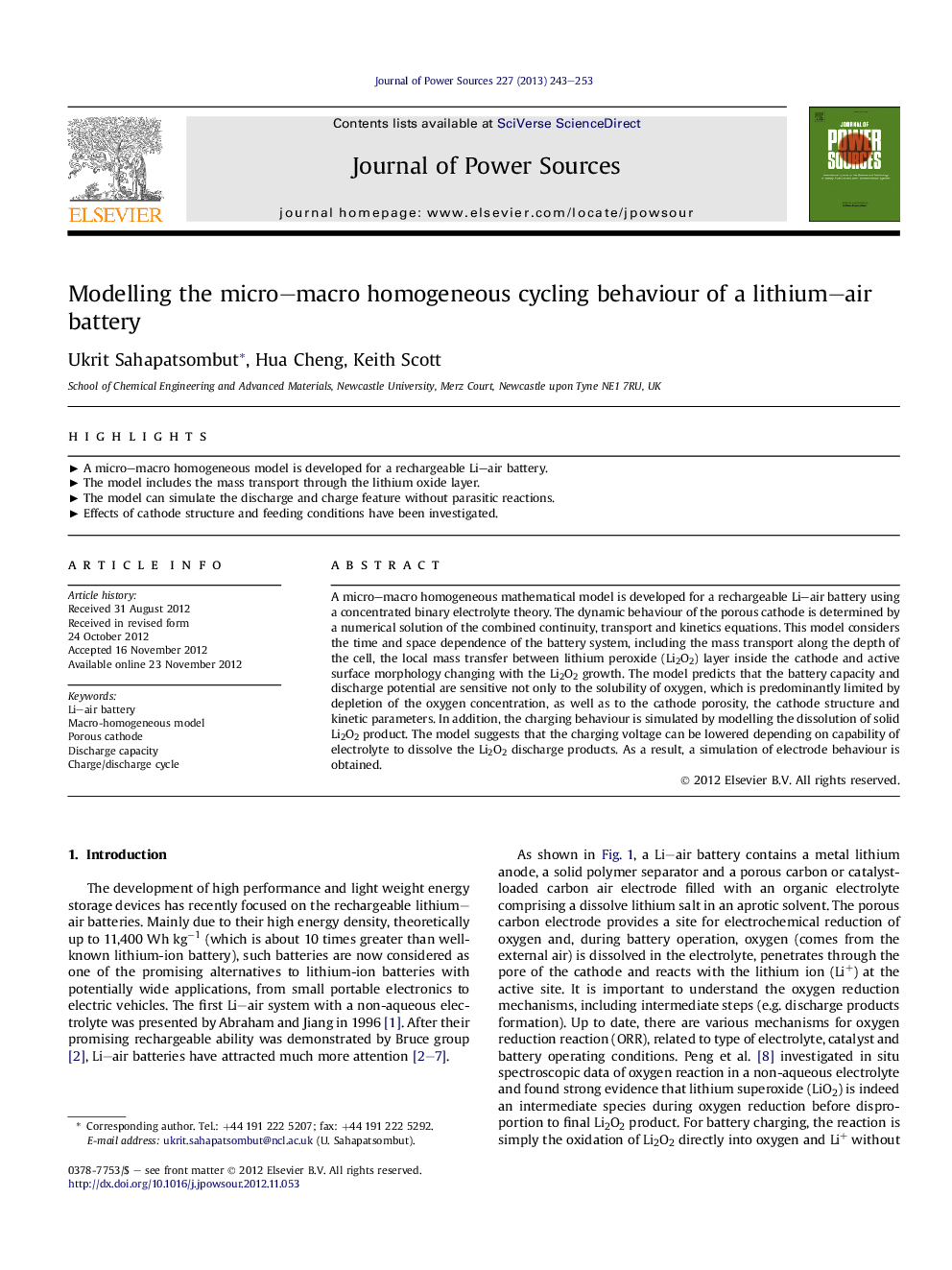| Article ID | Journal | Published Year | Pages | File Type |
|---|---|---|---|---|
| 1288301 | Journal of Power Sources | 2013 | 11 Pages |
A micro–macro homogeneous mathematical model is developed for a rechargeable Li–air battery using a concentrated binary electrolyte theory. The dynamic behaviour of the porous cathode is determined by a numerical solution of the combined continuity, transport and kinetics equations. This model considers the time and space dependence of the battery system, including the mass transport along the depth of the cell, the local mass transfer between lithium peroxide (Li2O2) layer inside the cathode and active surface morphology changing with the Li2O2 growth. The model predicts that the battery capacity and discharge potential are sensitive not only to the solubility of oxygen, which is predominantly limited by depletion of the oxygen concentration, as well as to the cathode porosity, the cathode structure and kinetic parameters. In addition, the charging behaviour is simulated by modelling the dissolution of solid Li2O2 product. The model suggests that the charging voltage can be lowered depending on capability of electrolyte to dissolve the Li2O2 discharge products. As a result, a simulation of electrode behaviour is obtained.
► A micro–macro homogeneous model is developed for a rechargeable Li–air battery. ► The model includes the mass transport through the lithium oxide layer. ► The model can simulate the discharge and charge feature without parasitic reactions. ► Effects of cathode structure and feeding conditions have been investigated.
